Liposuction in Mexicali
Search and Compare the Best Clinics and Doctors at the Lowest Prices for Liposuction in Mexicali

Find the best clinics for Liposuction in Mexicali
With Medijump you can browse 5 facilities offering Liposuction procedures in Mexicali. The cheapest price available is $1,053 in Monterrey
Liposuction in Mexico
Price: $ 1,053
Liposuction in Monterrey
Price: $ 1,053
Liposuction in Guadalajara
Price: $ 1,148
Ukraine offers the best prices Worldwide
Price: $ 120
From 69 verified reviews
María del refugio Ponce, 01 March 2022
The doctors and nurses are very attentive to the patient but those who are at the entrance do not give information to the family and do not let anyone in
From 4 verified reviews
Fabiola DeVries, 17 September 2020
I cannot express enough how happy I am to have found Dr. Aceves. I recommend him to all my friends and family who have expressed interest in plastic surgery.
From 24 verified reviews
Allison Saggio, 06 September 2020
Just Wow!! I had some surgery done by Doctor Amaya, and I can’t believe how much they spoil you in this hospital, everyone was really nice and always looking for your well being, the best part is you have your own room for recovery 😍 I am from California by the way.Thank you so much guys
From 22 verified reviews
Nancy Simental, 17 September 2020
Super sweet and helpful doctor. My cousin recommended him. She has also had work done with him and her results are amazing. He took me in last minute after I had another doctor who kept rescheduling me, I went Dr. Ramirez. He has no idea how much this surgery meant to me. I cried when I was done because I have wanted this so long and my other dr did not do a good job. Thank you so much Dr. Ramirez and staff, for being so kind and accommodating.
Hispano Americano Hospital, located in Cto Brasil, Mexicali, Mexico offers patients Liposuction procedures among its total of 54 available procedures, across 10 different specialties. Currently, there's no pricing information for Liposuction procedures at Hispano Americano Hospital, as all prices are available on request only, whilst the national average price is approximately $2,447. There are many specialists available at the Hospital, with 7 in total, and they have multiple recognized accreditations, including: CMCOM - Consejo Mexicano de Cirugía Oral y MaxilofacialAMCC - Academia Mexicana de Cirugia CosmeticaAMCE - Asociación Mexicana de Cirugía LaparoscópicaAMCG - Asociación Mexicana de Cirugía GeneralAMCPER - Asociación Mexicana de Cirugía Plástica, Estética y ReconstructivaCMCOEM - Colegio Mexicano de la Cirugía de Obesidad y Enfermedades MetabólicasCMCPER - Consejo Mexicano de Cirugía Plástica, Estética y ReconstructivaCMGO - Consejo Mexicano de Ginecología y ObstetriciaCMOT - Consejo Mexicano de Ortopedia y TraumatologíaCMU - Colegio Mexicano de UrologíaCNCPER - Colegio Noreste de Cirugía Plástica Estética y Reconstructiva
Compare Before & After Photos of _procedure_photos.phpLiposuction
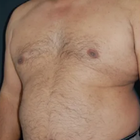
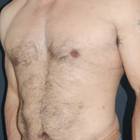
Front view

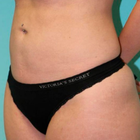
Half-side view
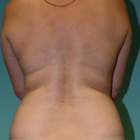
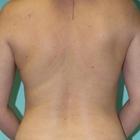
Full-side view
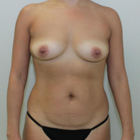

Front view
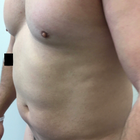

Half-side view
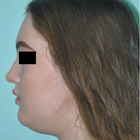
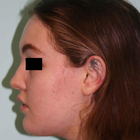
Full-side view
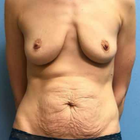

Front view
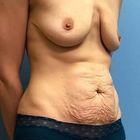

Half-side view
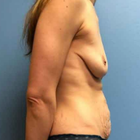

Full-side view
WHY US?
At Medijump, we're making medical easy. You can search, compare, discuss, and book your medical all in one place. We open the door to the best medical providers worldwide, saving you time and energy along the way, and it's all for FREE, no hidden fees, and no price markups guaranteed. So what are you waiting for?

Free

Best Price

Widest Selection

Risk-Free
What you need to know about Liposuction in Mexicali?

Liposuction is a cosmetic surgery that “sucks” out fat from areas that are hard to lose through a healthy diet and exercise, while liposculpture is the shaping of the skin back to its desired shape. Both are done in conjunction with one another at the same time. Most areas can be treated. Traditionally the most popular areas to treat are the stomach/abdomen, chin and neck, love handles, arms, and inner and outer thighs. Becoming more popular are the knees, calves and ankles, all with very successful results.
While liposuction can permanently remove fat cells and alter your body shape, it should not be viewed as a quick fix for individuals who are significantly overweight. The procedure works best for those who have already lost some weight themselves and are close to their ideal weight but need help tackling stubborn areas of fat in problem areas.
What is the cost of Liposuction in Mexicali?
When you're thinking about liposuction in Mexicali, one of the first things you probably wonder about is the cost. Here's the thing: the price isn't the same for everyone. It hinges on a few details like how many parts of your body you’re getting treated, how complex the treatment is, and the professional fee of your doctor. Costs for anaesthesia and the use of the surgical facility are also added to the bill. It's vital to remember, too, that because liposuction is often carried out for aesthetic reasons, normal health insurance might not cover it.
Can Liposuction be used as a weight-loss method?
Unwanted fats are very hard to get rid of especially if you are not a fan of exercise or diet. Liposuction, also known as Lipoplasty, liposculpture suction, lipectomy or simply lipo, basically eliminates unwanted fats by suctioning it away. Despite the growing trend of non-invasive fat reduction treatments, liposuction is still the leading procedure to remove stubborn fat cells.
Liposuction permanently removes fat cells and enhances the shape of your body. A plastic or dermatologic surgeon usually performs this type of procedure on the patient’s belly, hips, thighs, buttocks, arms, back or face to improve their shape. Furthermore, liposuction can be done together with other plastic surgeries such as facelifts, breast reductions, and tummy tucks.
This treatment procedure is particularly used for aesthetics, mainly to improve a person’s appearance. In most cases, maintaining and achieving such positive results will depend on your lifestyle.
What does a Liposuction Procedure Involve?
Before you have the treatment, a series of tests are required to ensure if you are fit for the surgery. You will also need to sign a consent form to confirm that you are fully aware of the risks, benefits and possible alternatives to the procedure.
You will likely be put under using general anesthesia, which can last for 1 to 4 hours. An epidural can also be used for procedures on the lower part of the body, although this is becoming increasingly unpopular now. Alternatively, you may be given local anesthesia if the procedure will be on small areas of your body. You may be asked to stand up during the procedure to ensure proper fat removal, but you will not feel any pain.
Tiny incisions will be made in the areas of interest through which a cannula can fit. This thin tube-like device is connected to a vacuum, capable of suctioning the fat from within your body. There are a few common techniques used, including Laser-Assisted or SmartLipo, UAL (Ultrasound-Assisted Lipo) or the most popular technique, Tumescent Lipo - this involves the pre-injection of a saline solution to help separate the fat from the blood, so less blood is removed. You'll discuss the best option with your surgeon before confirming what type of Liposuction is best for you.
How Long Should I Stay in Mexicali for a Liposuction Procedure?
Generally, patients who have received general anesthesia will be required to spend the night in the hospital (in-patient). Patients, who have had local anesthesia, may be able to leave the hospital on the same day.
After the operation, you will have to wear support bandages (support corset, bandages or elasticated support) whilst healing. Expect some pain, swelling and bruising during the following days and weeks. Your surgeon will prescribe medication to help control your pain and antibiotics to reduce the risk of infection. Furthermore, your stitches may be removed during your follow-up appointment with your surgeon. You should expect to stay in Mexicali for about a week post-op to allow for the initial recovery and check-up appointments, which will include the removal of stitches.
What's the Recovery Time for Liposuction Procedures?
Numbness in the specific area of your body where the fat was removed is to be expected for the first couple of weeks, usually, this will improve after 6 to 8 weeks. You may also need to wait a few days before going back to work. As for your normal activities, especially exercise, you may have to wait a few weeks before resuming.
Overall, the recovery time may vary from patient to patient. In most cases, patients can return to light activities within 2 to 3 days and are also able to go back to work after two weeks. As for the results, you may see visible results after 3 to 4 weeks, however, it can take several months before you see the final outcome.
What sort of Aftercare is Required for Liposuction Procedures in Mexicali?
Just like any other cosmetic surgery, following your surgeon’s aftercare instructions is vital in achieving and maintaining the best results. If the procedure was done above your waistline, you may be advised to sleep propped on pillows to have elevation on the specific area. This helps drain the fluids and prevent them from pooling. Furthermore, applying cold compress on a certain area where the procedure was performed is highly recommended, this will reduce inflammation and bruising especially during the first few days.
What's the Success Rate of Liposuction Procedures in Mexicali?
Liposuction remains one of the most popular cosmetic surgeries with a success rate of 85%, offering patients the enhanced body shape they've been craving. However, just like any other surgeries, it also comes with possible risks. Complications vary and are dependent on the procedure is as well as your surgeon’s skills. Possible risks and complications include:
- Severe bruising
- Inflammation
- Blood clot forms in veins, causing inflammation and complications (Thrombophlebitis)
- Kidney or Heart problems - changes in the body's fluid levels during the procedure may cause kidney or heart problems.
- Pulmonary embolism - when fat gets into your blood vessels and travels to your lungs, eventually, blocking your lungs.
Are there Alternatives to Liposuction Procedures in Mexicali?
CoolSculpting – is a fat freezing liposuction alternative. This is more suited to people who are close to their target weight but still have unwanted pockets of fat. Coolsculpting is a fat-freezing procedure that crystalizes your fat cells until they break apart painlessly.
Ultrashape - a non-invasive procedure that doesn’t require the need for anesthesia. This treatment procedure will make use of a body sculpting device that vaporizes fat cells within the targeted area with waves of ultrasound energy. Fat cells are permanently flushed out of your body, giving you a more natural-looking fat loss.
How does Liposuction differ from CoolSculpting and Vaser liposuction in terms of technique?
Liposuction vs Vaser Liposuction
Like traditional liposuction, the purpose of Vaser liposuction is to change the contours and shape of the body by removing persistent fat deposits. The word Vaser is actually an acronym for Vibration Amplification of Sound Energy at Resonance. This specialized ultrasound technology breaks down the fatty tissues using ultrasonic frequency waves, which is why it's often referred to as Ultrasonic Liposuction or Ultrasound Liposuction.
Liposuction vs CoolSculpting
CoolSculpting is the new non-invasive, freezing method used to also change the body contours and shape, however, this method does not require the use of a cannula so there is no damage to the overlying skin. Instead, it involves the controlled application of cooling localized fat deposits, which are then expelled from the body through the kidneys.
How safe is Liposuction in Mexicali?
Liposuction, when performed in Mexicali by a qualified and experienced plastic surgeon, is generally considered safe. The procedure has evolved significantly since its introduction, with advancements in technology and techniques contributing to its safety profile. Most liposuction procedures are performed without major complications, and patient satisfaction rates are high. However, as with any surgery, there is always an inherent risk.
It's crucial to have a detailed discussion with your surgeon regarding the safety of the procedure. The surgeon should be open about potential risks and complications, and explain how they would handle them should they arise. Factors such as your overall health, medical history and the area or the amount of fat being removed can influence the risks associated with liposuction.
What Should You Expect Before and After a Liposuction?
After your surgery, expect some swelling and discolouration in the areas where the fat was removed. To assist in healing and lessen swelling, you'll be given a snug garment to don. It is advisable to arrange for someone to take you home after the surgery and be with you for the initial day after the procedure. Though some changes will be noticeable soon after the surgery, the best results will take shape once the swelling has fully dissipated, which usually takes around 3-6 months. Regular check-ins with your surgeon are vital to ensure your recovery is progressing as expected.
As the wise saying goes, "Your waistline is your lifeline." Liposuction does remove fat cells for good, but weight gain post-procedure can cause the leftover fat cells to grow, potentially in different areas of your body. Therefore, a balanced diet and regular exercise are crucial for maintaining your new silhouette.
How Can I Prepare for Liposuction in Mexicali?
Prepping for a liposuction surgery in Mexicali? You've got this! Here are some absolutely essential steps you should follow for a smooth and successful procedure:
- Consultation: First things first. Have an in-depth consultation with your plastic surgeon. They'll assess your health status and discuss your goals. Taking this information into account, they'll provide some key instructions for you leading up to the surgery day.
- Healthy Lifestyle: In preparation for the procedure, it's of utmost importance to maintain a healthy lifestyle. Get in regular exercise. Eat balanced meals. Hydrate frequently. If you smoke, now is the time to quit. And hold off on alcohol. Your body will be on the fast track to healing, thanks to these healthy habits.
- Follow Instructions: Your surgeon will give you a set of preoperative instructions. Avoiding certain medications or supplements might be on the list. Stick to these guidelines religiously.
- Support Person: And lastly, on surgery day, make sure to have a trusted friend or relative by your side. Once the procedure is completed, you'll need a safe ride back home.
Whilst the information presented here has been accurately sourced and verified by a medical professional for its accuracy, it is still advised to consult with your doctor before pursuing a medical treatment at one of the listed medical providers
No Time?
Tell us what you're looking for and we'll reachout to the top clinics all at once
Enquire Now

Similar Procedures in Mexicali
Prices Start From $31

Prices Start From $120

Prices Start From $120

Prices Start From $120

Prices Start From $120

Prices Start From $31

Prices Start From $120

Popular Procedures in Mexicali
Prices Start From $111

Prices Start From $931

Prices Start From $76

Prices Start From $236

Recommended Medical Centers in Mexicali for Liposuction

- Interpreter services
- Translation service
- Religious facilities
- Medical records transfer
- Medical travel insurance
- Health insurance coordination
- TV in the room
- Safe in the room
- Phone in the room
- Private rooms for patients available

- Interpreter services
- Translation service
- Religious facilities
- Medical records transfer
- Medical travel insurance
- Health insurance coordination
- TV in the room
- Safe in the room
- Phone in the room
- Private rooms for patients available

- Interpreter services
- Translation service
- Religious facilities
- Medical records transfer
- Medical travel insurance
- Health insurance coordination
- TV in the room
- Safe in the room
- Phone in the room
- Private rooms for patients available

- Interpreter services
- Translation service
- Religious facilities
- Medical records transfer
- Medical travel insurance
- Health insurance coordination
- TV in the room
- Safe in the room
- Phone in the room
- Private rooms for patients available

- Interpreter services
- Translation service
- Religious facilities
- Medical records transfer
- Medical travel insurance
- Health insurance coordination
- TV in the room
- Safe in the room
- Phone in the room
- Private rooms for patients available
Liposuction in and around Mexicali
About Mexicali
Mexicali is a Mexican desert city with a population of 1 million and is situated on the Mexico-USA border, adjacent to its sister city Calexico, California. It is also the capital city of the state of Baja California. The small, yet, modernized business and the industrial city is well known for its highly educated population and also for the high standard of living. The city's close proximity to the US makes it an ideal weekend getaway spot for the Americans.
The main draw for tourists in Mexico is undoubtedly the medical care provided. In just the previous year, over 150,000 medical tourists touched down in Mexicali. These patients didn't only travel from neighboring USA, but also from regions as far-flung as Canada, Europe, and other global corners, truly highlighting the international appeal of medical tourism in Mexico.
Mexicali has a high-level infrastructure for medical care. A wide network of private and public hospitals, such as Hospital de la Familia and Hospital Hispano Americano, and clinics and laboratories guarantee specialized care. The city has 19 world-class hospitals, 418 dental consulting rooms, and 241 specialty consulting rooms.
Mexicali's medical sector, certified as per US standards, boasts skilled doctors and surgeons proficient in performing a wide spectrum of medical procedures. One unique advantage is the absence of waiting time with prompt and efficient services. Furthermore, the post-operative care provided is of exceptional quality, offering patients comprehensive support and guidance during recovery.
Affordability is a key feature of health care facilities and services in Mexicali. When drawn in comparison with the USA, medical costs can yield savings of up to 60%. Additionally, dental services come at roughly 70% cheaper, while prescribed medicines can be procured at a staggering 75% less, making Mexicali an attractive and pocket-friendly destination for medical tourism.
The hospitals cater to their medical tourists by providing exclusive transportation facilities, ensuring utmost convenience and ease. Additionally, they can assist in securing accommodations in top-tier hotels at appealing rates, thereby making the entire medical tourism experience a comfortable and hassle-free one.
Popular Areas in Mexicali
Mexicali is a compact city, full of life and entertainment. You can find a decent number of expatriates living here, most of them being Americans. Although the cost of living is cheaper when compared to that in the US, housing is expensive. San Pedro is the most expensive neighborhood in Mexicali. Los Pinos, Jardines Del Valle, Villafontana, Zona Dorada, Calle Novena, and Independencia are some of the popular residential localities of the city.
Nestled in the neighborhood of La Chinesca, a flourishing community of around 15,000 Chinese expats and immigrants thrives. Bearing the mark of its diverse population, La Chinesca boasts a sizable collection of Chinese restaurants, offering a gastronomic portal to China amidst the Mexican landscape.
The nightlife is lively and exciting with a variety of bars and clubs and most of the bars stay open to the wee hours of the morning serving drinks and food. Lined with family-friendly hotels and guesthouses, the city offers a wonderful array of entertainment and cultural venues and has several theatres, water parks, and museums.
Situated to the south of Mexicali, in the Gulf of California, the picturesque San Felipe reveals itself. It is graced with breathtakingly scenic beaches, hosting a variety of water sports for the adventurous at heart. Additionally, the town serves up delicious fresh seafood, adding a gastronomic delight to the visual spectacle.
Embedded in the desert landscape, the awe-inspiring Guadalupe Canyon emerges as an oasis. Flanked by lush palm trees, this enclave features natural pools and waterfalls, carving out a serene sanctuary amidst the otherwise barren surroundings.
Weather and Climate in Mexicali
Mexicali experiences a dry climate due to its minimal rainfall, receiving an average annual precipitation as slight as 79 mm. With an average annual temperature of 22.5°C, the climate is generally warm, to hot. The most comfortable periods for a visit fall between early April to mid-June, and from September to November when temperatures are most agreeable.
Summer and winter are the prominent seasons in Mexicali.
- Summer: April to October. Summer is hot and dry. July is the warmest month of the year, with an average temperature of 33°C. The temperature during the afternoon can reach 40°C. It barely rains during the summer. May is the driest month with zero precipitation.
- Winter: November to March. December, January, and February are cool yet dry. The month of January receives the maximum amount of rain and it is the coldest month of the year. At times, the temperature may even drop to 12.5°C during the winter months.
Getting around in Mexicali
General Rodolfo Sánchez Taboada International Airport is conveniently located just 20 km outside of Mexicali city. Numerous private and commercial flights operate from this hub, connecting Mexicali to a variety of cities across Mexico and the USA.
The city's main bus station is located a mere 4 km from downtown Mexicali, easily accessible by taxi or public bus from the city center. Once at the station, a network of direct coaches links Mexicali to other major Mexican cities. For visitors arriving from the United States, entry to Mexicali can be accomplished through Calexico, its twin city, along Highway 111. Do note that most of these highways are toll roads.
However, the local bus is the cheapest means of transportation. Some of the metro buses are air-conditioned with TV screens. Taxis are easy to find and are reasonably priced.
Tourist Visa in Mexicali
Visa exemptions for Mexico - Citizens of 67 countries, including Europe, Canada, Australia, and the USA, are exempt from obtaining a visa to visit Mexico for up to 180 days.
Visa requirements for citizens of India, China, Russia, and other countries - Citizens of India, China, Russia, and a few other countries need to obtain a tourist visa in advance before entering Mexico. The visa is valid for six months and a single entry, and an extension may be possible. You must enter Mexico within 90 days of the issue of the visa.
Tourist visa fee - The tourist visa fee for citizens of India is $22 USD.
To be eligible for a Mexican tourist visa, you must meet the following criteria:
- You must have a valid passport with at least six months of validity remaining beyond your planned date of departure from Mexico.
- You must have sufficient funds to support your stay in Mexico.
- You must have a return ticket or proof of onward travel.
- You must not have any criminal record.
Additional Information
- The Mexican currency is the Mexican peso (MXN). The Mexican peso is pegged to the US dollar, and the exchange rate fluctuates slightly on a daily basis. As of today, October 11, 2023, one US dollar is equivalent to approximately 19.6 Mexican pesos.
- Most people in Mexicali speak Spanish, followed by a few indigenous languages. The majority of the locals understand and speak good English.
- There are ATMs all over Mexicali, but none of them dispense US dollars. You will need to exchange your US dollars for Mexican pesos at a bank or money exchange bureau. Most major credit cards are accepted in restaurants and resorts in Mexicali.
- Approximately 77% of the population of Mexicali is Roman Catholic. Other religions practiced in Mexicali include Protestantism, Judaism, and Islam.
- New Year's Eve, Constitution day (February 4), Birthday of Benito Ju (March 18), Good Friday, Independence Day (September 16), Revolution Day (November 18), Christmas day are some of the public holidays in the city.
Popular Searches
- Plastic Surgery in Thailand
- Dental Implants in Thailand
- Hair Transplant in Thailand
- Breast Augmentation Thailand
- Gastric Sleeve in Thailand
- Gender Reassignment Surgery in Thailand
- Laser Hair Removal in Bangkok
- Botox in Bangkok
- Dermatology in Bangkok
- Breast Augmentation in Bangkok
- Coolsculpting in Bangkok
- Veneers in Turkey
- Hair Transplant in Turkey
- Rhinoplasty in Turkey
- Stem Cell Therapy in Mexico
- Rhinoplasty in Mexico
- Liposuction in Mexico
- Coolsculpting in Tijuana
- Rhinoplasty in Korea
- Scar Removal in Korea
- Gastric Sleeve in Turkey
- Bone Marrow Transplant in India
- Invisalign in Malaysia
- Plastic Surgery in the Dominican Republic
- Tummy Tuck in the Dominican Republic
- Plastic and Cosmetic Surgery in Poland
- Rhinoplasty in Poland
- Hair Implant in Poland
- Dental Implants in Poland
- IVF in Turkey




